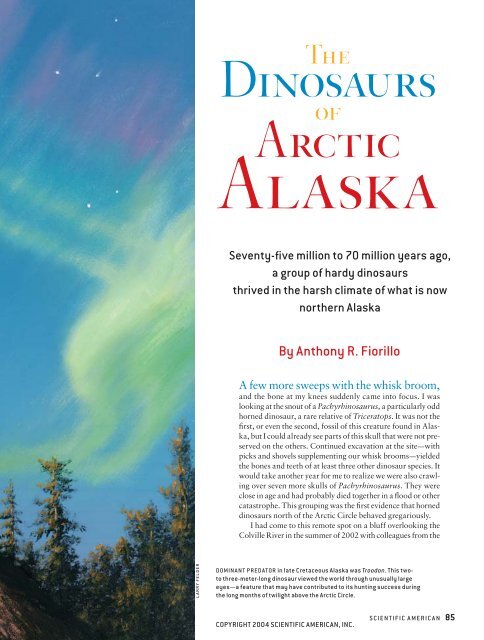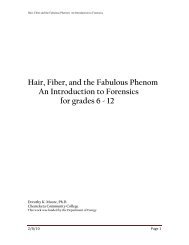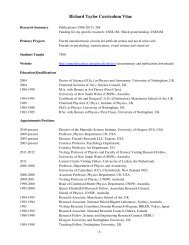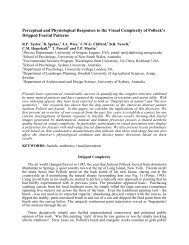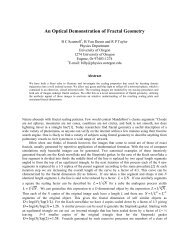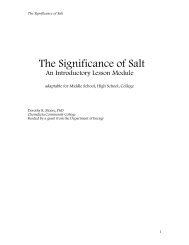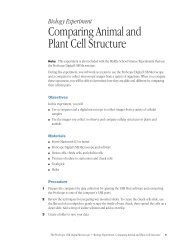December 2004 - Materials Science Institute - University of Oregon
December 2004 - Materials Science Institute - University of Oregon
December 2004 - Materials Science Institute - University of Oregon
Create successful ePaper yourself
Turn your PDF publications into a flip-book with our unique Google optimized e-Paper software.
LARRY FELDER<br />
The<br />
Dinosaurs<br />
<strong>of</strong><br />
Arctic<br />
Alaska<br />
Seventy-fi ve million to 70 million years ago,<br />
a group <strong>of</strong> hardy dinosaurs<br />
thrived in the harsh climate <strong>of</strong> what is now<br />
northern Alaska<br />
By Anthony R. Fiorillo<br />
A few more sweeps with the whisk broom,<br />
and the bone at my knees suddenly came into focus. I was<br />
looking at the snout <strong>of</strong> a Pachyrhinosaurus, a particularly odd<br />
horned dinosaur, a rare relative <strong>of</strong> Triceratops. It was not the<br />
fi rst, or even the second, fossil <strong>of</strong> this creature found in Alaska,<br />
but I could already see parts <strong>of</strong> this skull that were not preserved<br />
on the others. Continued excavation at the site—with<br />
picks and shovels supplementing our whisk brooms—yielded<br />
the bones and teeth <strong>of</strong> at least three other dinosaur species. It<br />
would take another year for me to realize we were also crawling<br />
over seven more skulls <strong>of</strong> Pachyrhinosaurus. They were<br />
close in age and had probably died together in a fl ood or other<br />
catastrophe. This grouping was the fi rst evidence that horned<br />
dinosaurs north <strong>of</strong> the Arctic Circle behaved gregariously.<br />
I had come to this remote spot on a bluff overlooking the<br />
Colville River in the summer <strong>of</strong> 2002 with colleagues from the<br />
DOMINANT PREDATOR in late Cretaceous Alaska was Troodon. This two-<br />
to three-meter-long dinosaur viewed the world through unusually large<br />
eyes—a feature that may have contributed to its hunting success during<br />
the long months <strong>of</strong> twilight above the Arctic Circle.<br />
COPYRIGHT <strong>2004</strong> SCIENTIFIC AMERICAN, INC.<br />
SCIENTIFIC AMERICAN 85


